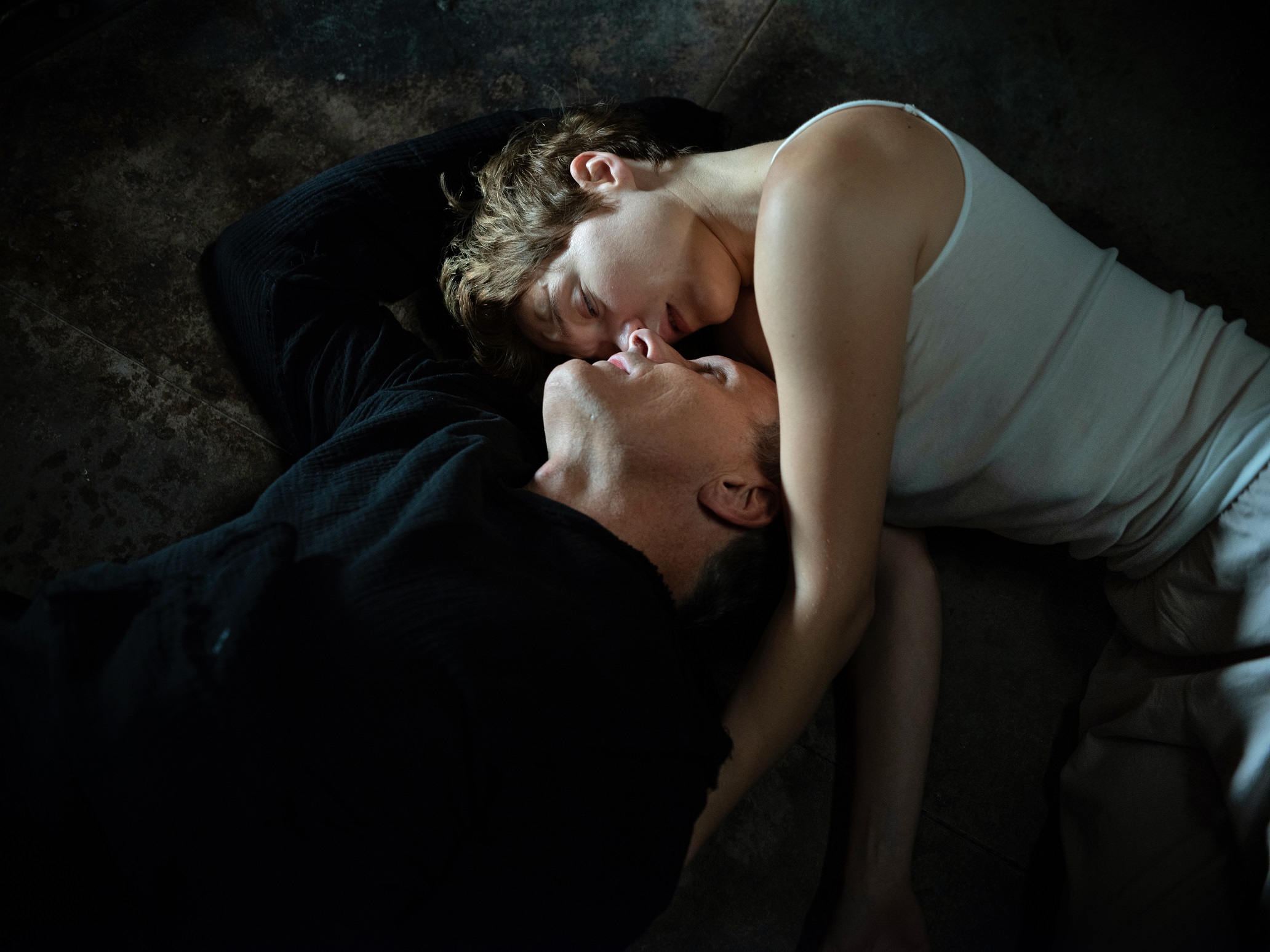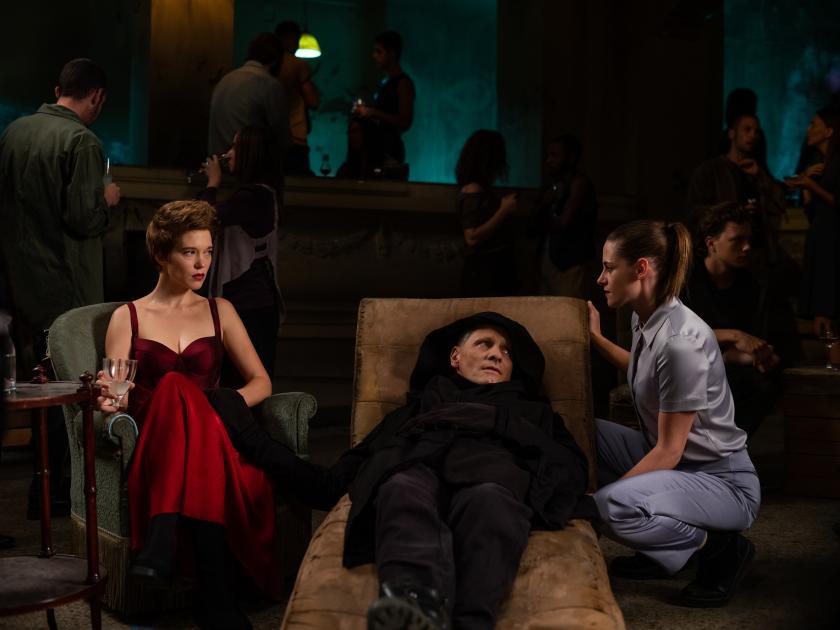Crimes of the Future is a nostalgic return to classic Cronenberg, a comforting catalogue of body horror and fleshy biosynthesis, paranoid plots and shadowy cabals. Sharing a title with his 1970 debut, the director is still fascinated by our physical adaptation to future shocks.
In his vague, allegorical sci-fi future, humanity’s “insurrectional” evolution has largely eradicated pain and produced surplus organs of uncertain consequence. Saul Tenser (Viggo Mortensen) and ex-trauma surgeon Caprice (Léa Seydoux, pictured below, right with Mortensen) are performance artists on a posh, illicit circuit, Caprice carving open and extracting his latest growths, then tattooing the sutures; as in Crash and Videodrome, these wounds double as erotic orifices.
National Organ Registry operatives Wippet (Don McKellar) and Timlin (Kristen Stewart) are low-rent government regulators, Detective Cope (Welket Bungue) the Body Vice cop Saul secretly informs on his underground world. Meanwhile, in a seaside shack evoking the film’s Athens locations, a child chews a plastic bin and his mother smothers him, vengefully leaving the corpse for his dad (Scott Speedman), who has his own rebel plans for this new society. Cronenberg gained and lost when he escaped the horror ghetto for the wider, Cannes prize-winning world, also largely jettisoning as he did so his own full-blown ideas for adaptations. There was a sleazy, B-movie edge to the early, bloody shockers which ended with Videodrome (1983), though impolite extremity survives in all his work, from Mortensen’s naked grappling in Eastern Promises to Julianne Moore’s movie queen spitting bile while noisily shitting in Maps to the Stars (a 2014 poisonous outsider’s social panorama of Hollywood which cut deeper and weirder than The Player).
Cronenberg gained and lost when he escaped the horror ghetto for the wider, Cannes prize-winning world, also largely jettisoning as he did so his own full-blown ideas for adaptations. There was a sleazy, B-movie edge to the early, bloody shockers which ended with Videodrome (1983), though impolite extremity survives in all his work, from Mortensen’s naked grappling in Eastern Promises to Julianne Moore’s movie queen spitting bile while noisily shitting in Maps to the Stars (a 2014 poisonous outsider’s social panorama of Hollywood which cut deeper and weirder than The Player).
With his faithful production designer since 1979, Carol Spier, again building fleshy furniture, Cronenberg is deliberately getting back to genre ground left fallow since his clunky response to AI, eXistenZ (1999), dropping trails to earlier work as he goes in a script which is itself 20 years old. “All hail the New Flesh!” James Woods cried in Videodrome, a reaction to the intimately available imagery of pirate cable and VHS. “Surgery is the new sex,” Timlin suggests here. That dialogue sometimes sounds badly translated, though the cast find its comedy – Stewart’s Timlin quivering with fangirl desire for Saul, who Mortensen gives weary irony leavened by underlying pain, as his mutations heave and creak. Seydoux adds her generous lust for life to a character willing to transgress for art and love, alongside copious nudity male auteurs appear keen to request (see also The French Dispatch).
That dialogue sometimes sounds badly translated, though the cast find its comedy – Stewart’s Timlin quivering with fangirl desire for Saul, who Mortensen gives weary irony leavened by underlying pain, as his mutations heave and creak. Seydoux adds her generous lust for life to a character willing to transgress for art and love, alongside copious nudity male auteurs appear keen to request (see also The French Dispatch).
The disjointed script and plot, minus the feverish, invasive sensations which made this irrelevant in the old work it resembles, don’t help this riff on the director’s own greatest hits. Some ideas remain timely and strong, such as our mutation to survive the microplastics in our guts, extrapolated into a boy chomping a bin. And Cronenberg climbs over the edge into helplessly creepy territory once, with Saul’s live autopsy of the boy’s body and what he finds there, a scene which suddenly slides out of control, as if the cerebral experiments have gone too far.
Otherwise, Crimes of the Future seems a charmingly grisly artefact of the past, the result of cinemagoers mutating to accept Cronenberg films without a qualm.














Add comment